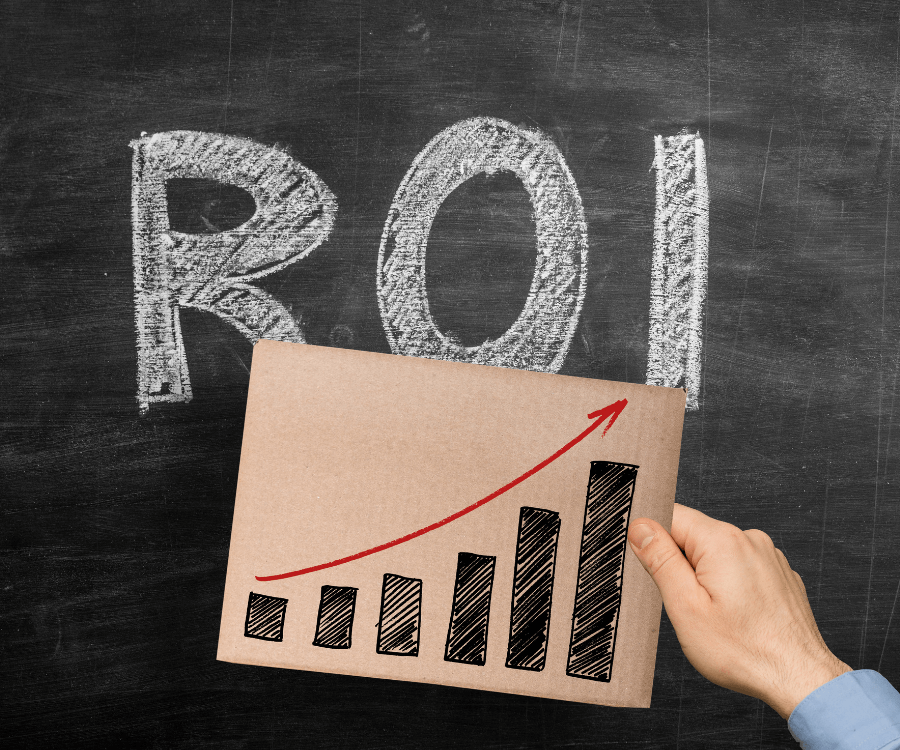Do you know…
- how much revenue on average your email marketing campaigns are generating every year?
- whether the engagement of your list has gone up over time?
- if your email campaigns are creating repeat buyers?
The answer to all of these questions comes down to knowing your email marketing ROI. In this post, we’ll go over how to calculate email ROI and what you should know about ecommerce email marketing ROI in particular. But first, let’s quickly recap what email marketing ROI is.
What Is Email Marketing ROI?
Email marketing ROI or Return On Investment is a measure of profitability that indicates how cost-effective email marketing is in generating sales. It’s often expressed as a percentage or as a ratio of how many dollars you get for every dollar spent on your email marketing campaigns.
How to Calculate Email Marketing ROI?
On average, the ROI of email marketing is $42 for every $1 spent. For ecommerce, that number goes up to $45 for every dollar spent.
Does your email marketing perform better or worse than that? Here’s how to calculate email ROI:
(gain from email campaigns – cost of email campaigns) / cost = ROI

If, for example, you made $5,000 in sales through an email campaign that cost $50 to create, the ROI of that campaign is ($5000-$500) / $500 = $9. For every dollar you spent on that campaign, you got $9 back.
If you prefer working with percentages, you can use the same formula and multiply the result by 100:
[(gain from email campaigns – cost of email campaigns) / cost] x 100 = ROI (expressed as a percentage)

Note that the above formula uses the general term of “gain” as what your email marketing ROI is will depend on your goals.
Now, how do you attribute gain to emails? How do you know whether your emails have generated revenue?
The three main ways to go about this are:
- tracking email links with UTM parameters through Google Analytics.
- creating and analyzing enhanced ecommerce reports in Google Analytics.
- using email marketing service providers that offer conversion tracking such as Klaviyo.
On top of that, you can calculate email ROI on a per-campaign basis, a monthly basis, a quarterly basis, or even a yearly basis. Ideally, you’ll track your email marketing ROI both on a per-campaign and on a periodical basis to know which campaigns perform best and if you’re achieving better results in general over time.
When it comes to figuring out the total cost of your email campaigns, take into account the following where relevant:
- the cost of your email service provider subscription.
- designer fees.
- copywriter fees.
- subscription fees for design tools.
- fees for stock and/or brand photography.
4 Crucial Things to Know About Ecommerce Email Marketing ROI
1. It’s one of the most cost-effective way of marketing
On average, the ROI of email marketing is four times higher than that of any other type of marketing. It’s a highly effective marketing method (when done right) and maybe even better is that you don’t need to be a big brand with a massive budget to get great results.
A lot of good email service providers base their prices on the size of your list, how often you email, and/or the features you need, so it’s easy to start small, test what works, and learn to grow your email marketing ROI while keeping your costs manageable.
Additionally, you are in full control of when you send your emails and you can make them as long, short, animated (think GIFs and videos) or plain as you like. That’s quite different from advertising on social media where you largely rely on an algorithm, need to follow platform content rules, and costs are unpredictable.
2. Email marketing has the highest conversion rate
When compared to other forms of marketing, such as social media marketing and direct mail, email marketing has the highest overall conversion rate. That may seem surprising, especially with the rise of (paid) social media marketing, but email marketing has a lot of things going for it.
One major aspect of the success of email marketing is the high degree of personalization it allows. If retargeting customers who browsed for white sneakers on your site with Instagram ads sounds cool, try sending them a personalized email with white sneaker recommendations tailored to match their previous buying behavior.
Fashion brand Hackett managed to increase their email marketing ROI 122% year-on-year for several years in a row now by sending emails that content-wise are tailored to the demographics of their audience and time-wise are optimized to when recipients are most likely to read their emails.
Another of the many advantages email marketing has over other marketing channels is that it offers a natural way to connect with your leads and customers and nurture them as you guide them through your sales funnel. While you can’t control when someone will check their email, you can make sure to send them something on a consistent basis, adapt your content to what they engage with, and build a relationship over time.
3. Consumers who buy via email spend 138% more than those that don’t receive email marketing campaigns
Not only do people who buy via email marketing campaigns spend 138% more than those who don’t, subscribers to your list are also more likely to convert than people who find you through social media or SEO.
Aside from the email marketing strategies already mentioned, abandoned cart emails play a large role in increasing ecommerce email marketing ROI. Take the below email from Roots as an example:
Both the subject line and email copy create a fear of missing out, complemented by a sense of urgency that the socks the subscriber put in their cart might be gone if they don’t buy them quickly. These types of emails tend to convert very well.
4. Marketers fail to double down on high-performing email marketing
According to Litmus, the better their email marketing performs, the less likely companies are to invest in it. Instead of doubling down and going for the best possible results, marketers seem to content themselves with the high ROI they’ve already achieved.
This may seem counterintuitive but can be explained by the often lower performance of other marketing channels. It’s likely that marketers are more inclined to keep an eye on the ROI of pay-per-click ads, social media ads, and influencer marketing when those channels aren’t performing as hoped.
In a larger team, email marketers should be responsible for continuously testing and optimizing their campaigns. In smaller companies where team members may be managing a range of marketing channels, it’s essential to periodically assess how much time and money is going to each channel and whether those efforts should be reorganized so that well-performing campaigns (such as email campaigns) get the attention they deserve.
There’s No ROI Like Email Marketing ROI
With an average return of $45 for every dollar spent, ecommerce email marketing ROI deserves to be properly tracked, optimized, and invested in. Not only is email one of the most cost-effective marketing channels, it also tends to perform better than any other type of marketing and allows you to build a long-lasting relationship with your customers.
MailCharts tracks the email marketing campaigns of more than 2,500 ecommerce brands. Sign up today to see which types of emails they’re sending and get inspiration to increase the ROI of your own campaigns.




